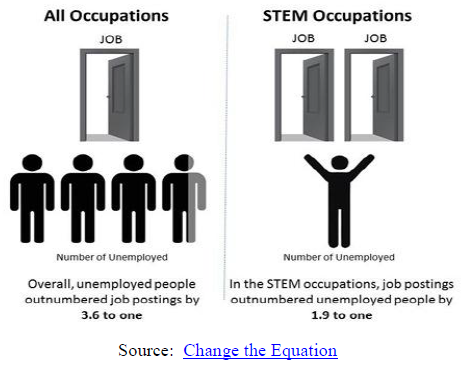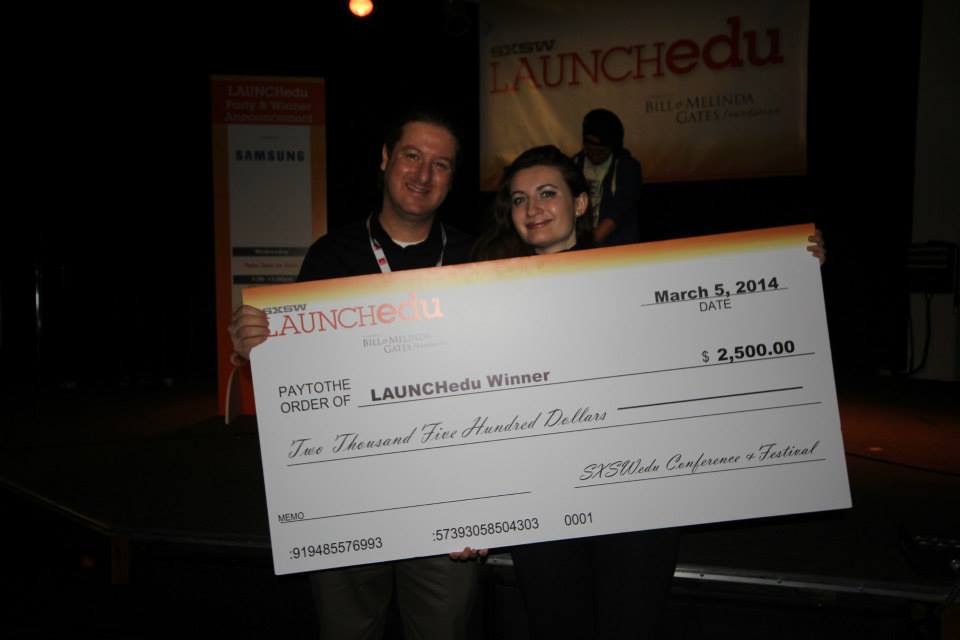3d printing in education in Japan
Hey! Here is some good news: the Japanese government thinks it has to play catch-up to the United States in at least one area of manufacturing technology, 3D printers. After a lifetime of hearing about the supposed superiority of Japan in all things manufacturing--I’m driving a Subaru; how about you?--it’s great at last to find something about American manufacturing worth emulating.
Even more important, it’s great to realize that we Americans are doing something right in our schools--intending to furnish every single one of them with 3D printers. The determinative word in that last phrase is “intending;” we still have a long way to go before we can claim victory.
This wonderful new technology, as President Obama said in his 2013 State of the Union speech, “... has the potential to revolutionize the way we make almost everything. The next industrial revolution in manufacturing will happen in America.” Of course the Japanese would prefer that the revolution start there!
- 0 Comments
- Apr 28, 2014 1:30:00 PM
Makerbot 3d printing in schools
Math teachers, science teachers and engineering teachers, are you looking for a way to make your beloved disciplines more relevant to your students? Maybe even inspire a few to love them the way you do? Well, right now there is affordable new technology out there that can help you do just that! The Makerbot 3D printer and STEM BOT 3D CLASS from our own RobotsLAB.
StemBot 3D program that teaches students how to 3D print a robot, assemble it, work on the electronics, and finally program it.
Actually, 3D printers have been around since the 1980’s, but they were massive and super-expensive like the first-generation computers. Only in the last few years have they shrunk in size and dropped in price to where individual households and schools could afford them.
- 0 Comments
- Apr 22, 2014 12:30:00 PM
Robots in Pre-Calculus

As part of a school wide implementation of Problem based Learning (PBL), the pre-calculus classes at Sammamish High school in Bellevue, WA used robots to teach math. The prompt was simple, “What pre-calculus level math lesson could you teach using one of the robots we have?” The work produced was amazing!
First the students were given the opportunity to play with the robots and see how they worked. They had access to all four of the robots from the RobotsLAB kit: Sphero – a small robotic ball, ArmBot – a mechanical arm that can pick objects up, Mobot – a rover that moves with precision, and a quadcopter AR.Drone. Students also had access to an additional robot, LinkBot – two rover bots who could be programmed to mimic each other. After students investigated each robot, they selected one robot to use as a tool to teach a pre-calculus level lesson. Students had the option of choosing a topic they had already studied or choosing a topic they had yet to study.
- 0 Comments
- Apr 21, 2014 10:00:00 AM
TeacherCast Interview: Learn How RobotsLAB is innovating STEM Education
- 0 Comments
- Apr 11, 2014 10:30:00 AM
- Posted by Anna Sandler
- Topics: Math, Robotics, Pre-Calculus, Local News, EdTech, STEM, National News, Education, Press, Computer Science, NAO, 21st Century Classroom, School, Student Engagement, Geometry,, Middle School, algebra,, Curriculum
The importance of ensuring America’s continued competitiveness with STEM
The Great Recession began in 2007 and ’by the numbers’ ended in 2009. "By the numbers" meaning "technically". The Misery Index and unemployment have remained high in spite of this technicality. Why is that do you suppose? Is it possible there has been a change in the economy at a fundamental level not responsive to rising housing prices?
Could it be that the workplace itself changed so greatly during this period with the explosion of mobile computing devices like smartphones and tablets that the available jobs no longer reflects the pool of trained, unemployed job seekers? According to Sidharth Oberoi, chief academic officer at Zaniac, that’s the case. He writes, "A closer look at U.S. unemployment statistics shows that even with unemployment still at historically high levels, large numbers of jobs are going unfilled. Most of these jobs have one very important thing in common — the need for STEM education". He says further data suggests that while there are 3.6 applicants for every available job in the US, there is only one unemployed STEM worker for every two available STEM positions.

- 0 Comments
- Apr 4, 2014 11:00:00 AM
- Posted by Mike Nardine
- Topics: EdTech, STEM, Education, Education Politics, 21st Century Classroom
ROBOTSLAB WINS LAUNCHEDU COMPETITION AT SXSWEDU

Austin, TX and San Francisco, CA – March 6, 2014 - A handpicked group of distinguished judges representing a cross section of in business, technology and education experts have selected RobotsLAB BOX as the winner of the LAUNCHedu Competition.
The competition began in August 2013 with approximately eighty applications. RobotsLAB was one of ten finalists chosen by the judges to present at SXSWedu on March 3. Following that presentation, RobotsLAB was one of three companies to be selected as a finalist. The final presentation was made in front of judges and a jam-packed room of educators on the morning of March 5. As part of the Educator Insights panel that discussed all ten competing companies, all three panelists cited RobotsLAB BOX as their favorite.
Based on the votes of attendees and judges, RobotsLAB BOX was ultimately chosen as the competition winner at the LAUNCHedu party on March 5. Betsy Corcoran, CEO and Co-Founder of EdSurge presented the award to RobotsLAB CEO Elad Inbar.
- 0 Comments
- Mar 6, 2014 12:13:59 AM
- Posted by Anna Sandler
- Topics: Math, Pre-Calculus, Local News, EdTech, STEM, National News, Education, Awards, 21st Century Classroom, School, Student Engagement, Geometry,, Middle School, algebra,, International News
RobotsLAB is excited to be one of the finalists of SxSW Edu!
|
Austin, TX, March 3, 2014 - The educational robotics company RobotsLAB is proud to be among the finalists of the LaunchEDU competition at SxSW edu conference in Austin, TX (March 3-6, 2014)
The company’s flagship product - the RobotsLAB BOX - was chosen as one of the finalists by experts and judges from the education market. The innovation and creativity of RobotsLAB BOX was recognized for its potential to create a profound change in the way that students understand the importance of math and science in our lives, and to help them to pursue a successful life in career or college.
|
- 0 Comments
- Mar 3, 2014 12:49:14 AM
- Posted by Elad Inbar
- Topics: EdTech, Awards, 21st Century Classroom
RobotsLAB BOX is among the top 10 finalists of SxSW Edu LAUNCHedu competition
Next week RobotsLAB is going to Austin TX for SxSW Edu LAUNCHedu competiotion.
We are one of the top 10 awesome finalists:
- 0 Comments
- Feb 27, 2014 4:12:00 PM
- Posted by Anna Sandler
- Topics: Awards, 21st Century Classroom
EdTech is introducing a Blended-Learning to Math Classes
"The Times They Are a-Changin" and never more so than now in math class. After struggling futilely for generations to instruct all math students in a classroom at the same rate, today’s math instructors have a viable, technology-aided alternative, blended learning. Blended learning, according to our ubiquitous friends at Wikipedia "is a formal education program in which a student learns at least in part through online delivery of content and instruction with some element of student control over time, place, path or pace."
- 0 Comments
- Feb 24, 2014 10:30:00 AM
- Posted by Mike Nardine
- Topics: Math, Local News, EdTech, Education, Education Politics, 21st Century Classroom, Student Engagement
Why We Love EdTech (And You Should, Too!)
What is the future of EdTech? Well, it took almost 500 years for EdTech to progress from the hornbook to the magic lantern. The hornbook appeared in England in the 15th Century. First immortalized in Shakespeare’s Love’s Labor’s Lost,
- ARMADO. [To HOLOFERNES] Monsieur, are you not lett'red?
- MOTH. Yes, he teaches boys the hornbook. What is a, b, spelt backward with the horn on his head?
- HOLOFERNES. Ba, pueritia, with a horn added.
The hornbook made its way to the colonies where it was gradually replaced by the equally low-tech slate and blackboard. It wasn’t until the latter end of the 19th Century and the beginning of the 20th that EdTech underwent a revolutionary change.
Imagine if you can the impact of the projected images of the magic lantern or the 3D images of the stereoscope on students for whom the written word in books, on slates and blackboards that had been the only source of information. At the same time their ability to express themselves individually improved as slate and blackboard were pushed to one side by that mass-produced writing instrument the pencil and its work-mate, inexpensive paper.
While it took 500 years for EdTech to progress from the horn book to the hand-held, 3D stereoscope, it took less than 50 years for the next EdTech revolution, electricity, to run its course. Edison said let there be light and school rooms were never the same again from their lighting to the available teaching tools. According to the infographic below the moving picture projector arrived in 1925, the overhead projector in 1930 and the mimeograph in 1940. Radio carried information to school rooms across the nation in the 30’s and 40’s and television first found its way into the classroom in the 1950’s. While radio and tv appeared to be the future of EdTech, yet another revolution was underway as the transistor replaced the tube in radios and televisions.
The digital revolution began with the transistor. The transistor brought about the microprocessor revolution and the microprocessor begot the handheld calculator which brought relief to those of us who had always found math tedious and despair to some math teachers who suddenly found their dullest students capable of adding, subtracting, multiplying and dividing more quickly and accurately than they. The handheld calculator was quickly followed by the personal computer revolution and software that allowed poor spellers like me to quit worrying about every word and begot the Internet revolution….
What then is the future of EdTech? We believe it is technological revolution upon revolution, each building on the preceding revolution and hastening the arrival of the next!

- 0 Comments
- Feb 13, 2014 11:00:00 AM
- Posted by Mike Nardine
- Topics: EdTech, Education, 21st Century Classroom, School, Student Engagement
Relevant Posts
Popular Posts
Subscribe to Email Updates
-
I Want To Learn MoreADDITIONAL INFORMATION



